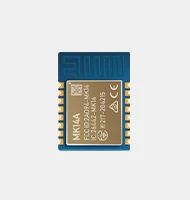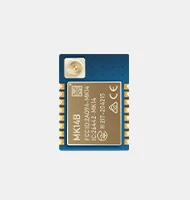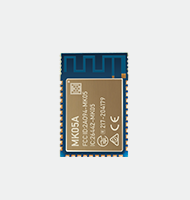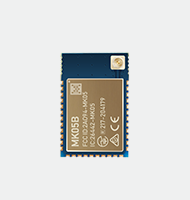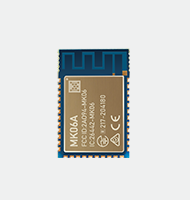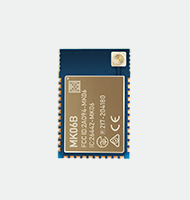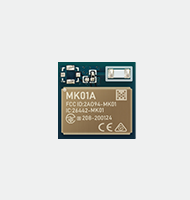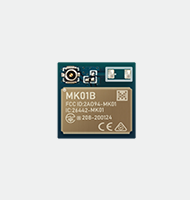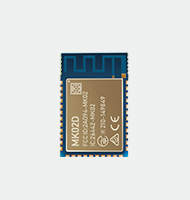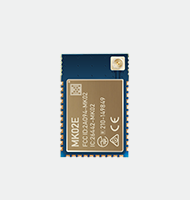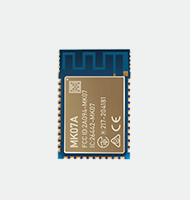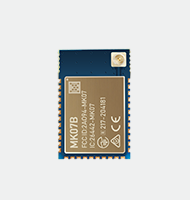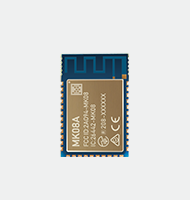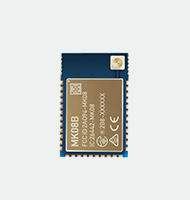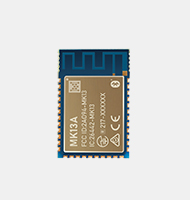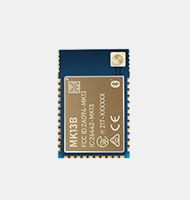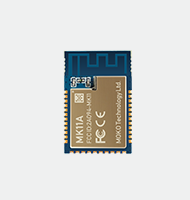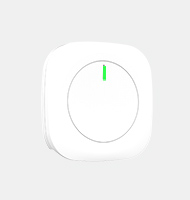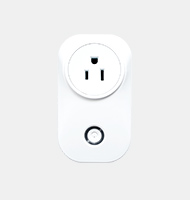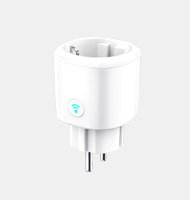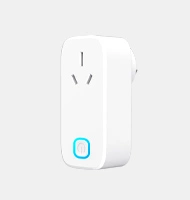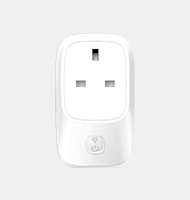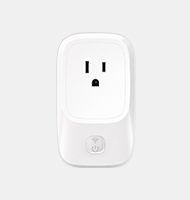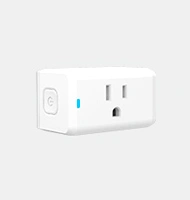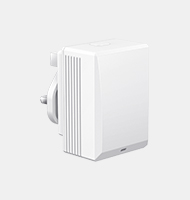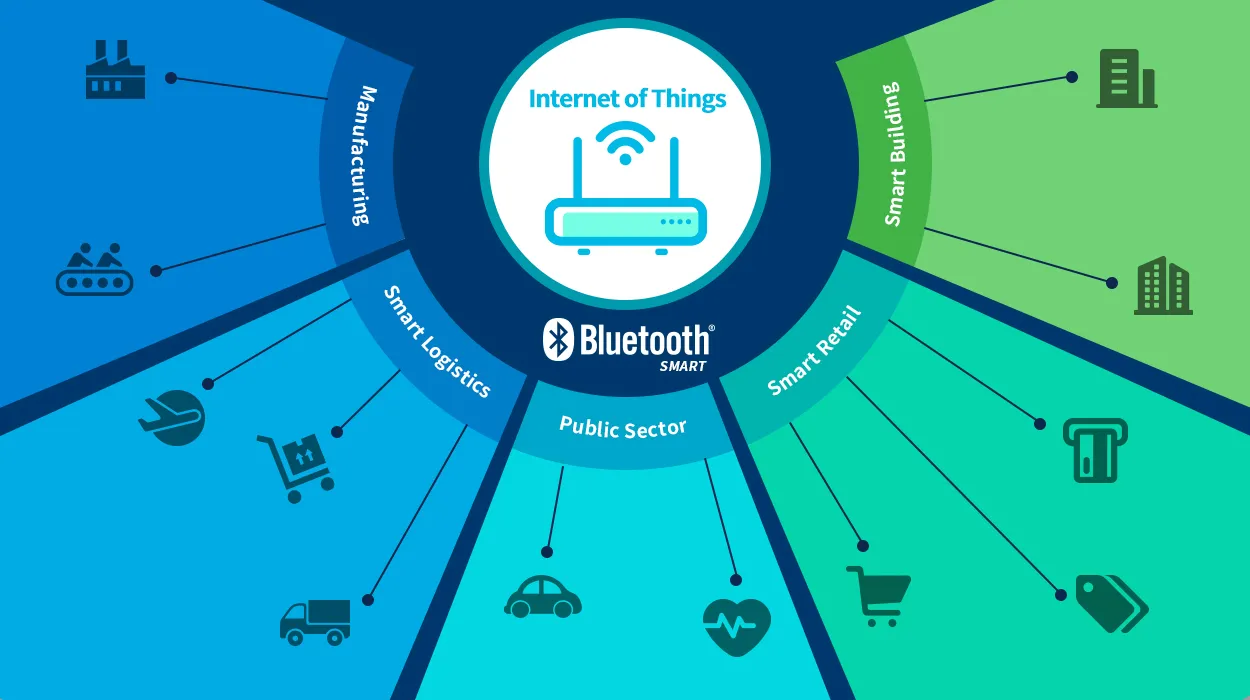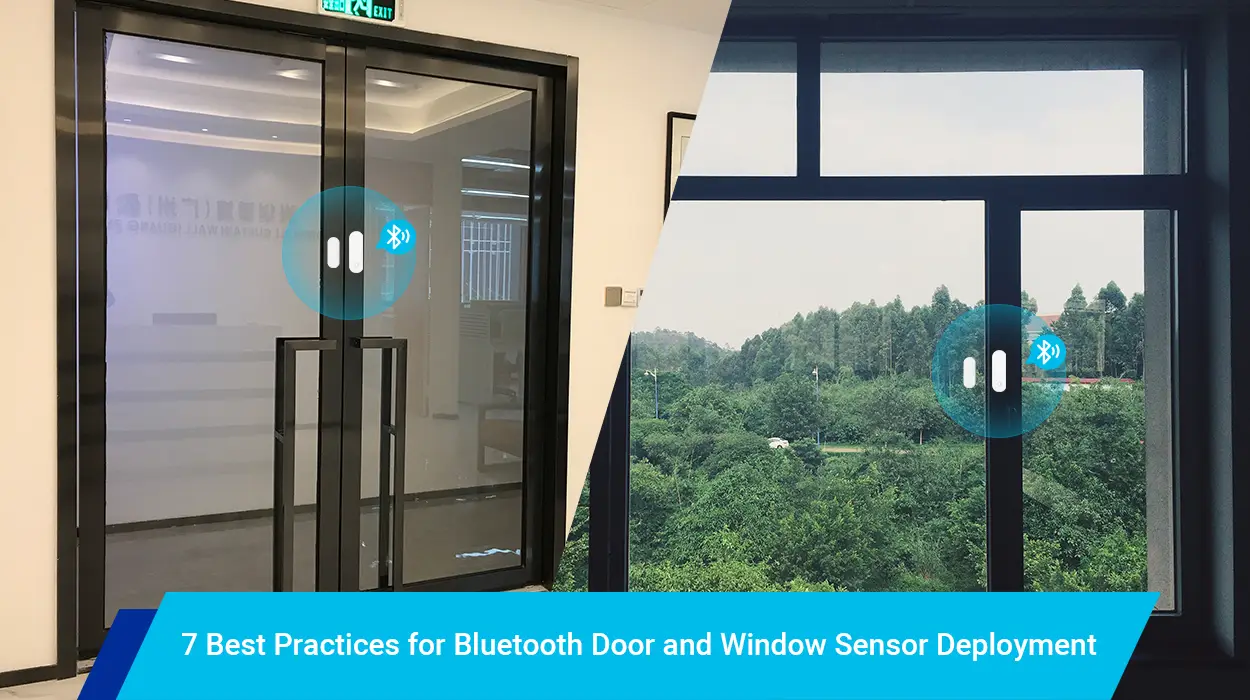Before talking about Bluetooth IoT, let’s start with what is Bluetooth!
What is Bluetooth?
Bluetooth has been in the tech market as a wireless channel of connection between devices since Ericsson invented it in 1994. Since then, Bluetooth technology has evolved and has become the go-to wireless connectivity solution for wearables, gadgets, and other devices. Nowadays, you will find Bluetooth everywhere; cars, speakers, wearables, medical devices, wireless headphones, shoes, etc. If you own any modern device, it is safe to assume that you have encountered and used Bluetooth technology at one point or the other.
In other words, Bluetooth is a short-range wireless technology medium used for exchanging data between two electronic devices (usually mobile) over a short distance. This process completely eliminates the primitive use of cables for connectivity. A typical example is how you can listen to music with a headset on the go without having to plug it into the headset jack of your mobile device.
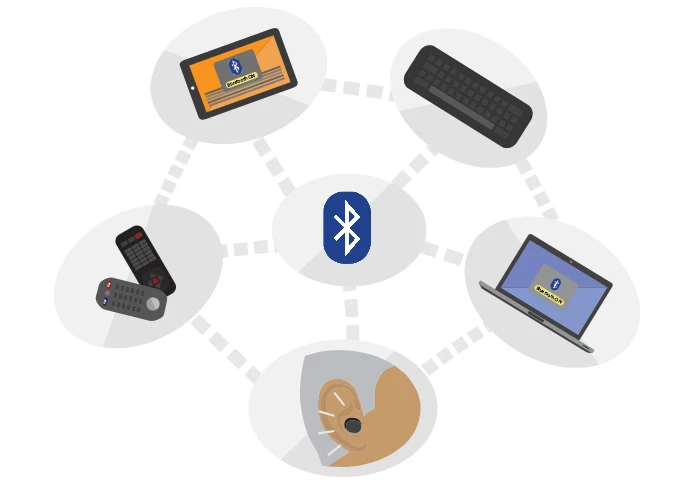
Bluetooth exchange works using UHF radio waves, otherwise known as short wave radio, with radio bands ranging from 2.402 GHz to 2.480 GHz and building a Personal Area Network (PAN). Typically, a master Bluetooth device can connect to a maximum of seven devices at a go. Still, some Bluetooth devices do not have the capacity to connect up to this number of devices. However, this kind of connection is called a piconet, an ad hoc computer network created at that moment using Bluetooth technology. And in this technology system, connected operate in a master-slave relationship.
For example, suppose you initiate a connection between a phone and a wireless headset through a headset; in that case, the headset becomes the master (the initiator), and the phone is the slave. Subsequently, both devices can switch roles and have the phone operate as the master, while the headset becomes the slave. Ultimately, in a Bluetooth piconet, it is possible for a master to have seven slaves; and for a slave to have more than one master.
Evolution of Bluetooth versions
Bluetooth technology has evolved from Classic Bluetooth to Smart Bluetooth obtainable today. The latest version of Bluetooth 5 has four times the range, twice the speed, and 800 percent more data broadcast frequency than earlier versions. These additional features will increase the number of Bluetooth IoT devices and ultimately make Bluetooth a smart choice for firms with extensive infrastructure because of the 100% uptime and cost-effective options available by deploying Bluetooth 5 IoT devices.
Bluetooth 5.0 also brought with it a mode that allows for the correction of errors called Forward Error Correction (FEC). FEC allows data lost from errors that occur due to noise and interference to be collected by the receiver when needed.
Bluetooth Classic and Bluetooth Low Energy (BLE)
There are two Bluetooth variants of Bluetooth technology; hence all Bluetooth devices can be classified into two categories – Bluetooth Classic and Bluetooth Low Energy (BLE). On the one hand, Bluetooth Classic is usually used in wireless speakers, headsets, and car infotainment systems. On the other hand, Bluetooth Low Energy (just as the name implies) is more prominent in applications that are keen on power consumption and transfer small amounts of data less often. In other words, BLE is commonly found in battery-powered devices like mobile phones, sensor devices, etc. As opposed to the Bluetooth Classic that consumes high energy, Bluetooth Low Energy thrives on reduced power consumption and cost, even while maintaining a similar communication range as Bluetooth Classic.
It is important to note that these two kinds of Bluetooth devices are inharmonious even when they share the same brand and specification document. That is to say, a Bluetooth Classic cannot work together with Bluetooth Low Energy. So, it is not farfetched why some devices like smartphones integrate both Bluetooth variants to communicate with and connect to either type of Bluetooth present in other devices.
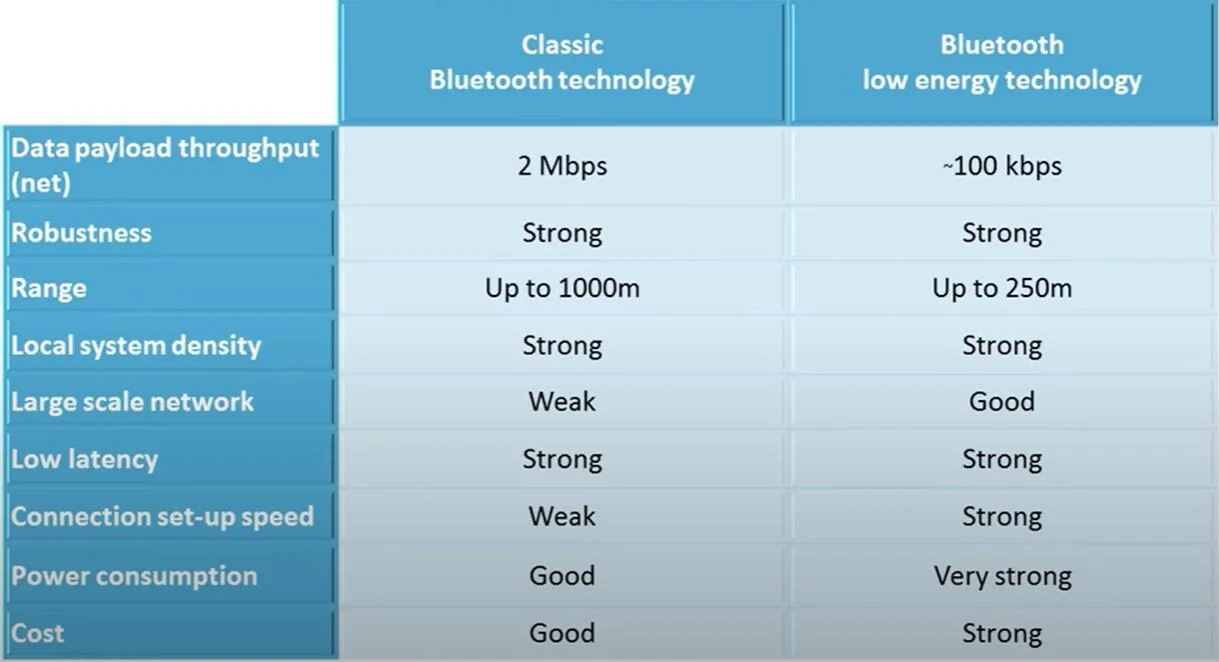
What Is IoT?
Just as the name implies, the Internet of Things (IoT) basically means the system behind how things are connected. In more detail, however, the Internet of Things refers to the gazillion devices that are connected to the Internet – which collect and share data all around the globe. These devices have chips, sensors, software, and other technologies infused in them. These let them link up with and broadcast data with other devices and systems across the internet, using unique identifiers (UIDs), without requiring human-to-human or human-to-computer interaction.
A thing in the IoT can be as minute as a pill or as enormous as an aircraft; it might be a car that has in-built sensors to alert the driver when they need to check their engine oil levels or tire pressure levels, or a driverless truck that does not need any human in the driver seat to function. More recently, some cities have even embarked on smart city projects to help them understand, monitor, and control the environment.
It is essential to understand that the term Internet of Things is mainly used for devices that generally aren’t expected to have an Internet connection or can connect to the Internet but can communicate with an Internet network self-sufficiently without human interaction or influence. That is why a Bluetooth device like the MOKOBlue Bluetooth beacon such as W5 wearable beacon tracker, smartwatch, fitness band, or other wearable devices are considered IoT Bluetooth devices.
How Does IoT Work?
The Internet of Things network comprises smart devices – which are web-enabled – that use processors, software, and communication hardware infused in them to receive, process, and send data received from their environments. Afterward, these IoT devices proceed to share the sensor data collected from their connections to an IoT gateway or another edge device, through which data is sent to the cloud or necessary channels for further analysis. Occasionally, these devices communicate with other connected devices and act on information generated from one another. While these devices go through all these processes without human participation, people might still interact with the devices to set them up, set commands or instructions, or access data curated over time. In recent times, we have seen IoT evolve to the point where it uses artificial intelligence (AI) and machine learning to assist with the data collection process and make it easier and more dynamic.
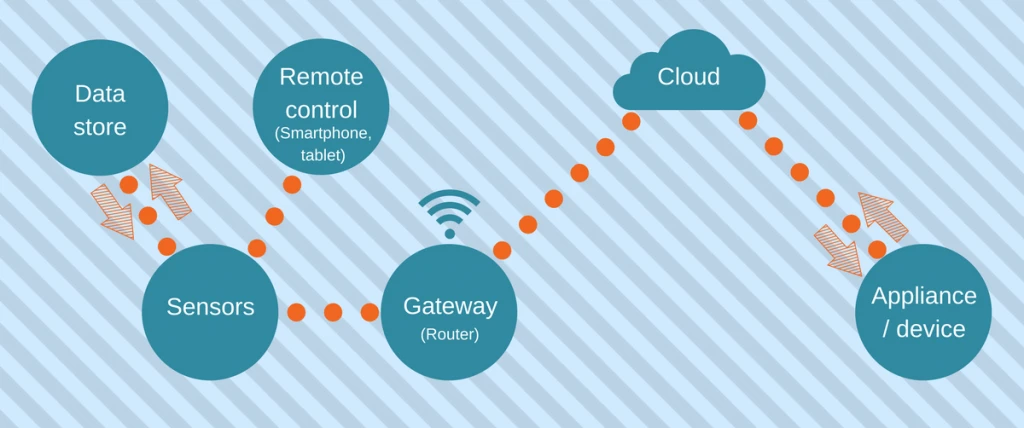
Interestingly, the Internet of Things keeps getting bigger with reportedly more connected things than the number of people around the globe. Security devices, automobiles, building automation, and healthcare are predicted as the fast-growing sectors that will account for more IoT devices in coming years and leave everything connected everywhere.
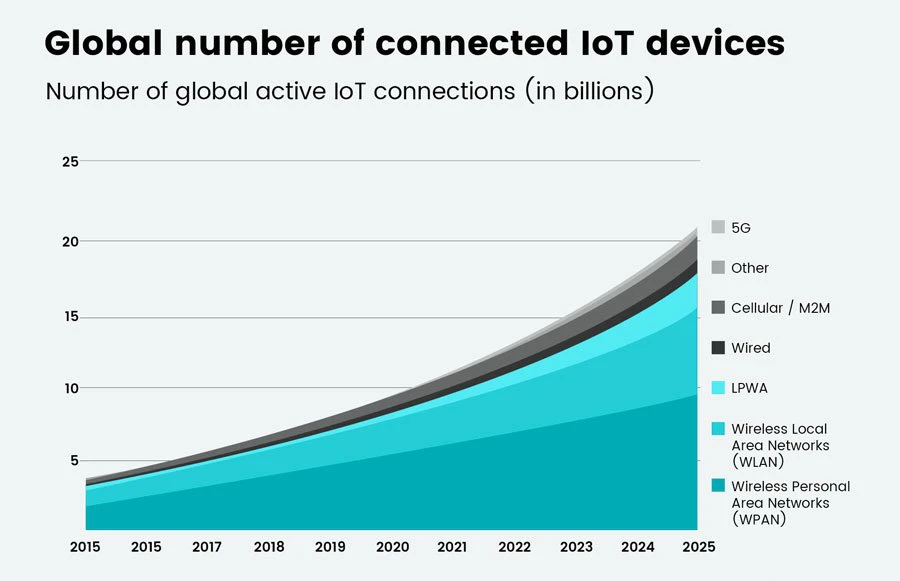
What is Bluetooth In IoT
Bluetooth has become a household name in the Internet of Things (IoT) community, offering more than just hands-free calling and wireless audio. It is a serious technology that drives IoT applications, providing fast and seamless device-to-device connections without relying on the Internet. Since a device-to-device connection is expected to be fast, seamless, and wireless in the Internet of Things, Bluetooth IoT is highly deployed because of its no-internet function on the one hand and its capability to create large-scale device networks via Bluetooth mesh, on the other hand. Bluetooth technology in IoT opens up numerous possibilities.
Bluetooth Mesh Networking
Bluetooth mesh IoT is a computer mesh networking system based on Bluetooth Low Energy (BLE) that allows for many-to-many communication among connected devices over a Bluetooth radio. In a Bluetooth mesh IoT network, every message has a source and destination address through which devices publish messages to their destinations, which is a single thing, group of things, or everything.
Bluetooth mesh IoT networking is a game-changer for wireless device networks. It is no surprise that it sets a stage for a new wave of connectivity from whole-building networks to city-wide smart services, especially in the present era of home, building, community, and industrial automation.
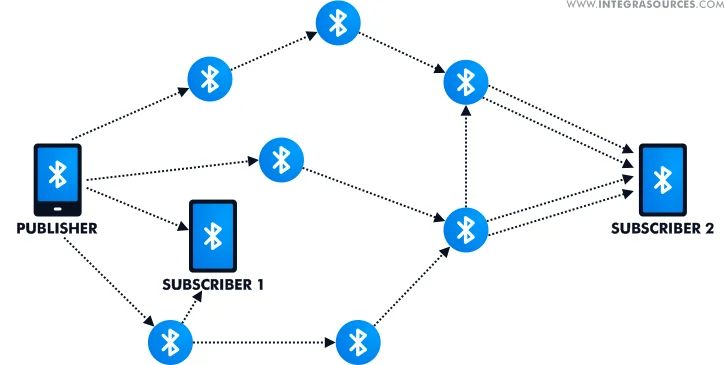
Why Bluetooth in IoT?
Bluetooth Low Energy in IoT can help IoT devices conserve energy by keeping the devices in sleep mode when they are not in use, then letting users exit the mode when connected or reconnected. Bluetooth Low Energy in IoT is ideal for IoT applications because, contrary to the classic Bluetooth applications, which reconnect to devices at a time of six seconds or more, IoT BLE applications can quickly pair and reconnect with devices in six milliseconds instead.
In IoT BLE, a device can function in three stages; the Advertising stage, the Scanning stage, and the Connected stage. In a scenario where you want to integrate two BLE devices with each other, one device has to advertise. In contrast, the other has to scan for the device advertising before subsequently initiating a connection. Advertising basically involves broadcasting packets that allow another scanning device to find them.
Bluetooth IoT Devices
Advertising is deployed in all Bluetooth IoT devices, but one prominent application that exclusively functions in this state is the Beacon technology. Beacon devices, like the MOKOBlue M1 Ultra-thin beacon, stay in the Advertising mode while broadcasting data to other devices that they can explore and read such data from. So, since advertising data capacity is increased in Bluetooth 5.0, Beacons can unlock new IoT applications and use cases by transmitting more data.
![]()
Wi-Fi in IoT
Wi-Fi is a wireless network networking technology that uses different bands of radio waves to connect and transmit data and information between devices. This is a prominent technology in all modern-day smartphones and computers. For Wi-Fi in IoT, a microchip is needed for connection between devices, and robust firmware is needed to manage the Wi-Fi credentials of the device because Wi-Fi is very susceptible to malicious attacks.
More often than not, Wi-Fi-enabled IoT devices are gigantic immovable hubs. However, there are smaller devices that are equally Wi-Fi-enabled. The Wi-Fi IoT device needs to be relatively close to the Wi-Fi access point in use to use Wi-Fi.
Bluetooth and Wi-Fi Strengths and Weaknesses in IoT
While the processes for Bluetooth IoT and Wi-Fi IoT look similar in terms of functionality, there are significant differences in how the two technologies stack up in terms of features.
- Speed: In terms of speed, Wi-Fi boasts a maximum speed faster than what is obtainable in Bluetooth IoT. Wi-Fi IoT devices work at a minimum of 54 Mbps, while their Bluetooth counterparts work at only 3 Mbps. It is needless to say that this is because Bluetooth typically transfers small chunks of data, like numerical values from a Bluetooth-enabled IoT smartwatch, while Wi-Fi is the better option for sending large data files, like HD videos and photos.
- Location Detection: Wi-Fi and Bluetooth can accurately provide location information through the Bluetooth IoT and Wi-Fi IoT devices that they are connected to. Although, Bluetooth is somewhat more reliable because of its proximity. So, the better option, in this case, is dependent on the accuracy and precision required of the devices in use.
- Security and Privacy: Bluetooth is not majorly built with a secure Bluetooth IoT protocol, but the security obtainable is sufficient for most purposes. On the other hand, Wi-Fi comes with a more secure option, mostly if you work with sensitive data. Wi-Fi lets you add a security layer through security with Wi-Fi IoT protocols such as WEP, WPA, WPA2, and WPA3 – which is the latest and most preferred version of the WPA series.
- Proximity Detection: In terms of proximity detection, the proximity data provided by BLE in IoT is significantly more precise than what is obtainable from its Wi-Fi counterpart. It is important to note that a hundred percent accuracy is not guaranteed in both, but the Bluetooth option is preferable.
Power Usage: Bluetooth (especially BLE) was initially designed to run on less power than Wi-Fi. If you run on Wi-Fi, though, there might be a need for you to provide an additional power source connected to your device.
Range of Bluetooth IoT and Wi-Fi IoT
Usually, Bluetooth comes with a limited range than Wi-Fi. High-end Bluetooth devices usually have a maximum range of 328 feet (100 meters), which can be seen in long-range Bluetooth IoT devices; however, most low-end Bluetooth devices have a range of about 33 feet (10 meters), present in short-range Bluetooth IoT devices. At the same time, the range of a Bluetooth device still depends on other external factors like obstacles in the way of connected devices or the thickness of walls partitioning the two devices. For Wi-Fi Bluetooth IoT, the range depends on factors such as transmission power, antenna type, frequency, and external factors like the environment where the Wi-Fi routers are located. It is essential to understand that Wi-Fi routers located outdoors usually cover a more comprehensive range.
Bluetooth or Wi-Fi for IoT: Which is preferable?
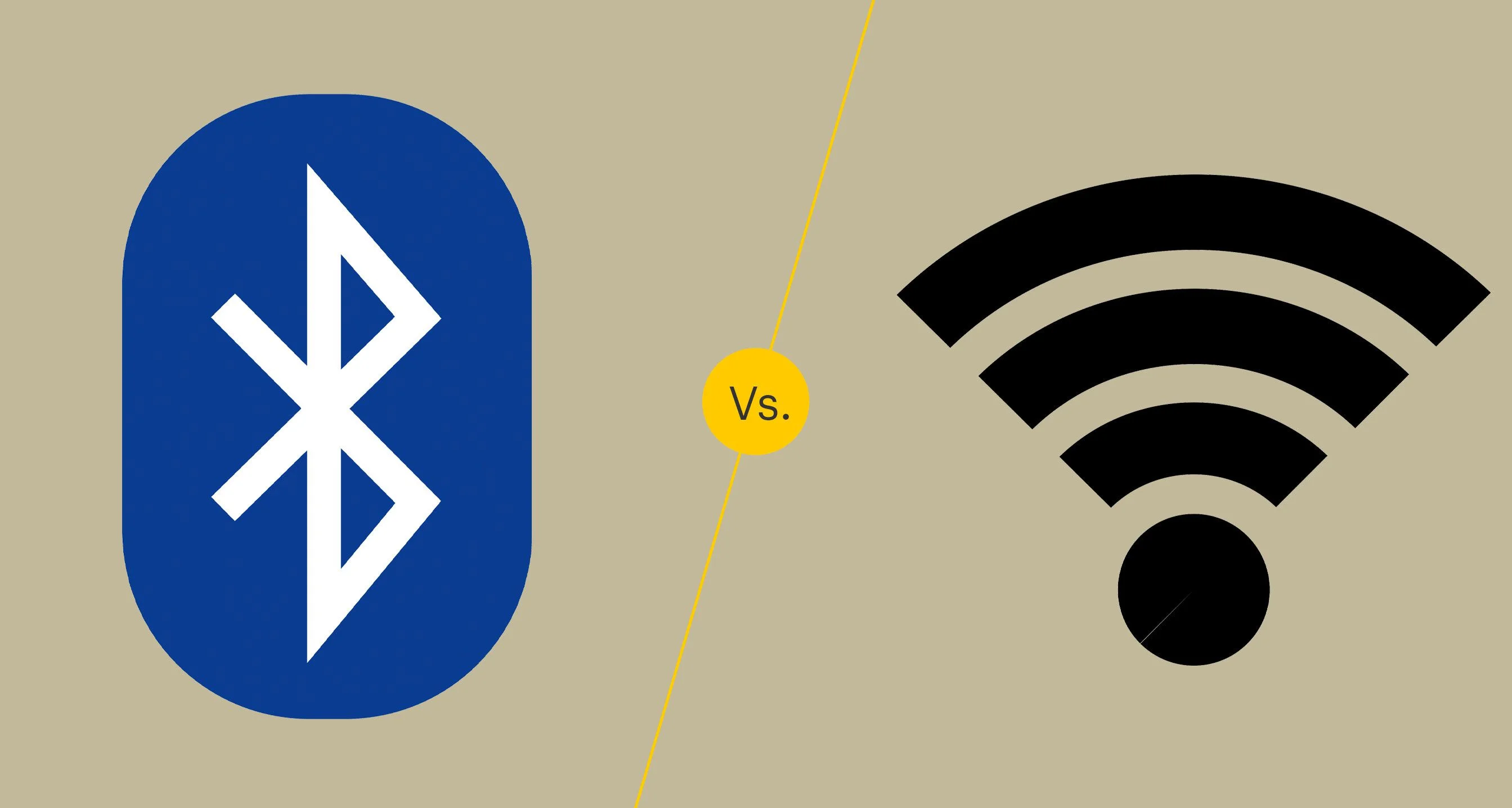
Evidently, from the factors considered, there is no distinct winner between Bluetooth and Wi-Fi IoT. It is not technologically possible for you to have an IoT device that runs on Bluetooth only because it needs an intermediate device that will help it broadcast the data received by the Bluetooth IoT device through Wi-Fi. Bluetooth is generally better for mobile devices with limited power requirements. At the same time, Wi-Fi is more suitable for larger devices that need a direct internet connection.
Therefore, the better choice is dependent on your business needs. Consulting with a great IoT firm (like MOKOBlue) that can advise you accordingly and help you make informed decisions would be advisable.
Bluetooth Low Energy (BLE) in Android and iOS
These days, the first question app developers ask when creating an app is which operating system (OS) it will run on; Android or iOS? With Bluetooth, though, the answer is both operating systems. The latest Android and iOS versions are built to work with Bluetooth Low Energy. Hence, Android Bluetooth IoT and iOS Bluetooth IoT. It is vital to note that although both Android and iOS support Bluetooth Smart (BLE), their implementations are somewhat distinct. The connected device or product must be compatible with both implementations for the two operating systems.
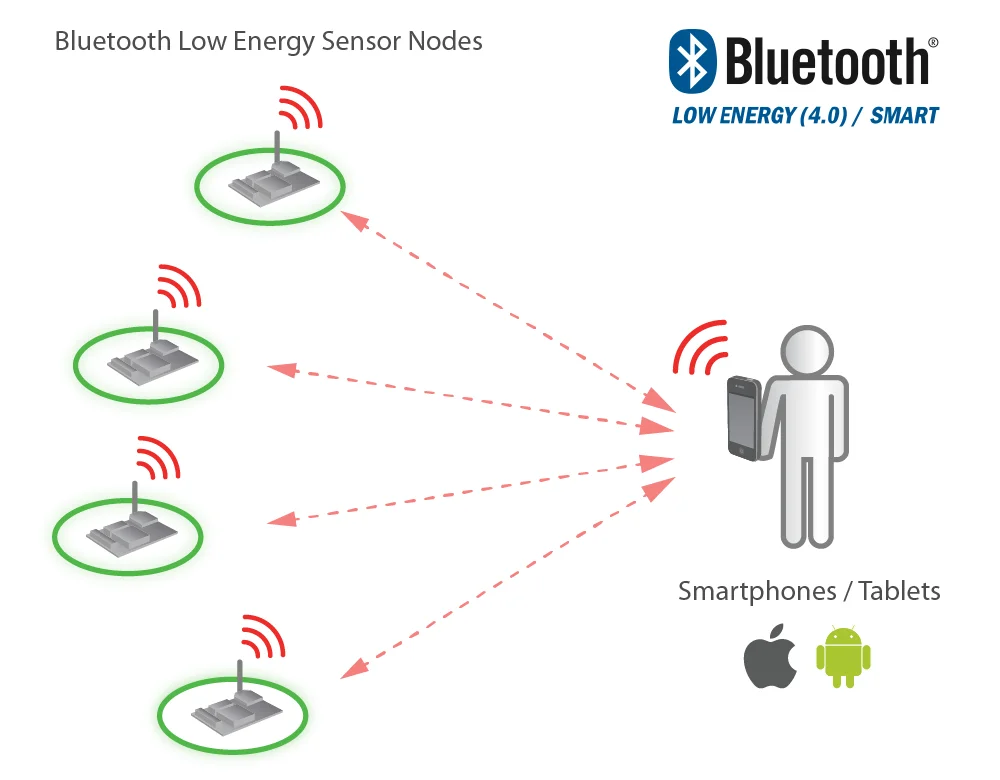
Android Bluetooth IoT and iOS Bluetooth IoT
The significant difference between pairing in iOS Bluetooth IoT and Android Bluetooth IoT is that Android devices come with built-in Bluetooth supporting apps, whereas, for iOS, you must download the device’s supporting app for the device to pair with Bluetooth. As explained, both iOS and Android allow devices to pair independently of their settings applications, but the initiation of pairing is different in both. For an iOS Bluetooth application to pair with another device, it needs some encrypted data; without which the pairing process will not successfully be completed.
Besides, Android permits the developer to determine whether the pairing process has succeeded without difficulty, unlike in iOS, where an app must send another request for the encrypted data to see if it is rejected – Arduino Bluetooth IoT gives you this kind of freedom at the development stage of a device. In other words, in Android Bluetooth IoT, there is the possibility of working on the user experience around pairing without implementing any encryption requirements, while in iOS Bluetooth IoT, the encryption requirements have to be implemented first. Also, when it is time to un-pair or forget a device, it can be programmatically done on Android Bluetooth IoT, unlike in iOS Bluetooth IoT, which requires you to manually get it done through the settings app.
Android Bluetooth IoT vs. iOS Bluetooth IoT: Which is Better?
It may be tedious to develop a product that is compatible with all the available versions of Android and iOS on the market. However, the use of necessary tools at the development stage of products or devices will help figure out the key concerns such products or devices might have subsequently. This means that informed planning must be done in order to arrive at which features should be developed eventually. Without such planning in place, it will be impossible to work with either Android IoT or iOS IoT. It could as well affect the behavior of the connected product negatively.
Bluetooth is Connecting IoT to the Future
In today’s technology world, Bluetooth wireless communication technology is preferred for IoT devices majorly because the new age Bluetooth technology comes with exceptional speed, robust security, magnificent range, and amplified connectivity. The advent of Bluetooth Low Energy (BLE) in its network stack has further designed an auspicious connectivity system for all IoT devices. Similarly, the cost of using applications and their energy consumption levels have been significantly limited by the introduction of BLE technology into the Internet of Things. These features make Bluetooth a more suitable platform for IoT devices to function.
It is not farfetched to say that the Mesh networking technology is one interesting revolution that binds IoT applications better with Bluetooth in comparison to other available connectivity options available. For example, in architecture, Bluetooth Mesh IoT extends an IoT Bluetooth device’s possibilities to connect to a whole building or a wide area. In other words, the ability of devices to inter-operate, which is assured in a Bluetooth mesh network will transform the future of work and bring about more smart factories in the coming times.
Innovative Bluetooth Projects
Bluetooth technology is the finest wireless connection platform to merge applications, which is the direction that most IoT innovations are generally tilting towards. As engineers and developers continue to push for more low-power-consuming designs and energy harvesting, more devices and applications are poised to benefit from remarkably long battery life and battery-free operation eventually. Merging Bluetooth technology with state-of-the-art systems like On-Demand Wake-Up and Lowest Power Radio can enable extended lower power consumption in the regular Internet of Things device.
Bluetooth IoT Applications
Without any doubt, developers have been able to introduce Bluetooth-powered devices that can function using Bluetooth IoT applications. Devices like remote controls, smart home devices, wearables, tracking devices, and keyboards, amongst others, have been developed to limit the stress and financial implications of users having to change batteries frequently due to energy-saving Bluetooth applications and energy-harvesting models in use. Moreover, Bluetooth for IoT applications like asset tracking, indoor locating, beacons, industrial automation sensors, tire pressure monitors, electronic shelf labels, etc., used in industrial and enterprise solutions, will also reduce ownership and maintenance costs since battery replacement is eradicated. Whereas, in more demanding applications like industrial sensors or medical applications, the risk of failure will be significantly reduced because of the reliability that such devices provide – all thanks to their extended or ‘forever battery’ life.
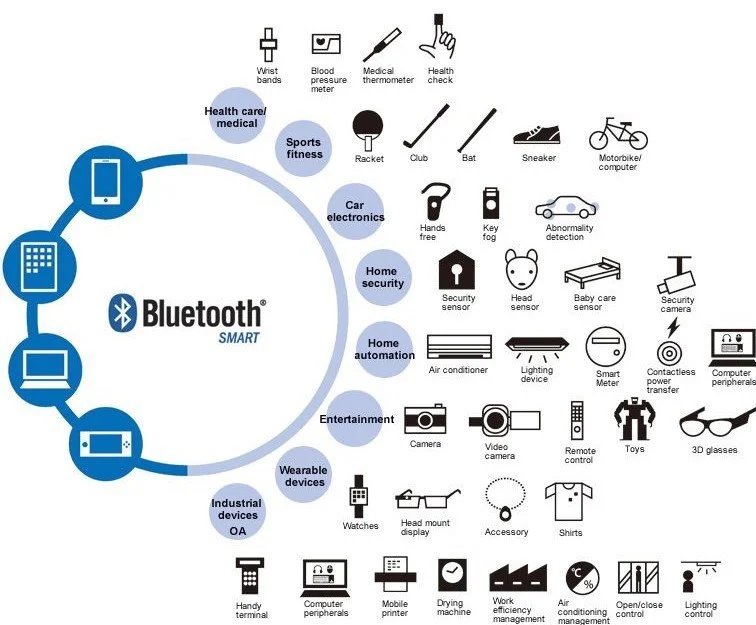
How Will Bluetooth-Enabled IoT Devices Dominate the Market?
According to ABI Research, by 2024, IoT end markets will represent 31% of total Bluetooth device shipments, surpassing smartphones. Industrial adoption of energy harvesting solutions will enable devices with extended battery life or no batteries, reducing deployment and maintenance costs for IoT fleets. This, along with software advancements from various companies, will drive the widespread use of Bluetooth-enabled IoT devices across multiple applications, solidifying their dominance in the tech market.
Bluetooth and 5G
The rise of 5G will increase the demand for Bluetooth devices like beacons, asset tracking, sensing, tags, and locating. We will see an increase in demand for battery-free Bluetooth devices (that is, devices that do not have to be powered by a battery at all) in many industries such as smart homes, industry 4.0, smart cities, healthcare, and retail.
As a matter of fact, devices will have an everlasting battery life (or ‘forever battery’ life). For extensive IoT usage, Bluetooth and 5G will come together to change the dynamics of connecting devices at different points in any system. For example, a group of sensors in the same location will be able to integrate with each other by running on Bluetooth Mesh technology.
It is needless to say that Bluetooth connectivity is the perfect choice for devices that require intermediate-level, energy-saving functionality, and extended battery life. These devices will be able to link and transmit information faster using 5G technology.
Bluetooth 5.0 Promises in IoT
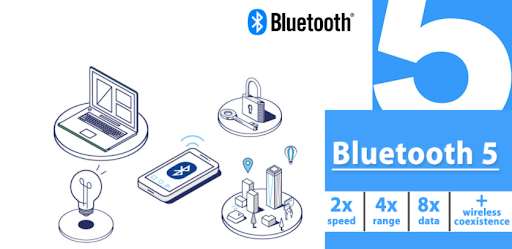
As Bluetooth technology progresses from the Bluetooth 5 IoT to Bluetooth 5.1 and Bluetooth 5.2 in the coming years, we will see a limitless likelihood of more sustainable smart devices that will not rely on batteries storm the market alongside an IoT world that is much more cost-effective. The potential of this advancement is the Bluetooth direction finding feature, which is currently specified in Bluetooth version 5.1. The direction-finding updates allow devices to understand other devices’ precise positions, even down to centimeter-level accuracy. Imagine a scenario where you are guided to your section and seat on a plane or to the exact brand of chocolates you’re looking for at a supermarket. These are the feasible possibilities that Bluetooth 5 IoT technology promises. In the same vein, automobile manufacturers may use the direction-finding feature to use smartphones to replace keys. This will bring about a keyless entry experience, which can be much more accurate and with more robust security.
In conclusion, the proposed market growth of Bluetooth-integrated IoT devices implies the colossal flow of technological advancements. Bluetooth in IoT will make living and doing tasks easier for individuals by automating all types of activities through numerous Bluetooth IoT projects. In the same vein, more manufacturers and large-scale housing communities like estates and apartment blocks will consequentially be protected by IoT devices. Interestingly, Bluetooth technology paves the way for all devices and applications to seamlessly and accurately synchronize with one another.
